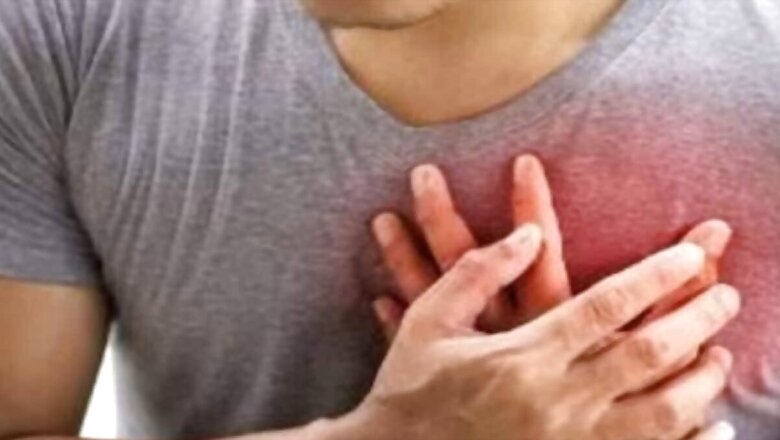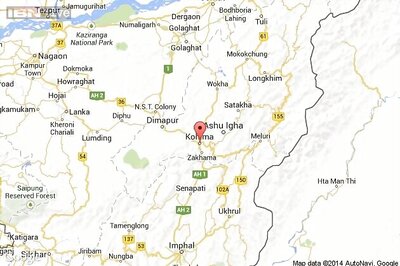
views
We often wonder the difference between a heart attack and a cardiac arrest and often mistake the two. For the unversed and the confused, a heart attack occurs when blood flow to a part of the heart is blocked, often due to a blood clot, leading to damage to the heart muscle. On the other hand, cardiac arrest is a sudden and unexpected loss of heart function, where the heart stops beating altogether. While a heart attack involves a circulation issue, cardiac arrest is an electrical problem, emphasizing the critical distinction between the two cardiovascular emergencies.
Dr Anand Pandey, Senior Director, Cardiology, Max Hospital, Vaishali, says, “A heart attack occurs when there is a blockage in one or more arteries, leading to sudden damage to the heart muscle. On the other hand, a cardiac arrest is characterized by the sudden cessation of heart function, where the heart stops altogether. It’s important to note that a heart attack can sometimes lead to a cardiac arrest, although they are distinct events.”
Dr Sameer Gupta, Senior Interventional Cardiologist, Group Director – Cardiac Cath Lab, Director – Metro Group of Hospitals, Noida, further explains, “A heart attack also known as myocardial infarction, is a condition in which one or more coronary arteries become blocked, reducing or stopping blood flow to a portion of the heart muscle. On the other hand, cardiac arrest happens when the heart stops beating unexpectedly, which prevents the blood supply to the brain and other essential organs.”
While ventricular fibrillation or ventricular tachycardia, which disrupt the heart’s normal rhythm and impair its ability to pump blood, are frequently the cause of cardiac arrest, heart attacks are typically caused by the accumulation of plaque (atherosclerosis) in the coronary arteries, which can rupture and form a blood clot, obstructing blood flow.
Symptoms
The two conditions also have different symptoms. “Shortness of breath, nausea, dizziness, and pain or discomfort in the arms, back, neck, jaw, or stomach are all signs of a heart attack. Abrupt loss of consciousness, no pulse, and respiratory cessation are among the signs and symptoms of cardiac arrest,” shares Dr Gupta.
During a heart attack, there may be ongoing chest pain, and with timely medical intervention such as primary angioplasty, the patient can survive. “However, in a cardiac arrest, there is no electrical activity in the heart, making it a life-threatening emergency,” warns Dr Pandey.
Tips For Maintaining A healthy heart
Dr Gupta shares tips for optimal heart health:
- Know and Recognize the Warning signalsIf you suffer symptoms like palpitations, shortness of breath, chest discomfort, or abrupt loss of consciousness, you should be aware of the warning signals of a heart attack or cardiac arrest and seek immediate medical assistance.
- Maintaining a Healthy LifestyleEat a well-balanced diet full of whole grains, fruits, vegetables, lean meats, and healthy fats. Reduce your consumption of added sugars, cholesterol, trans fats, saturated fats, and sodium. Refrain from smoking and drink in moderation. Strive to engage in regular physical activity, such as flexibility, strength, and aerobic conditioning.
- Maintain a Healthy WeightA balanced diet and frequent exercise will help you reach and stay at a healthy weight. Visit a dietician for personalized guidance on managing your weight.
- Manage and control StressEngage in activities or hobbies that encourage relaxation, deep breathing exercises, yoga, meditation, and other stress-reduction strategies. Stay Connected with friends, family, or other social groups.
- Frequent Check-UpsMake routine appointments to undergo screenings for diabetes, cholesterol, and blood pressure and also regularly monitor these yourself at home.
- Handling Chronic and recurring ConditionsManage diabetes, high blood pressure, and high cholesterol with food, exercise, medication, and routine monitoring.
- Be mindful of prolonged periods of sitting, as sedentary behavior can contribute to heart problems.
- Prioritize sufficient sleep each night to support overall health and heart function.
- Limit consumption of junk food and opt for a balanced diet rich in fruits, vegetables, lean proteins, and whole grains.
- Choose low-fat dairy products to reduce saturated fat intake and support heart health.




















Comments
0 comment